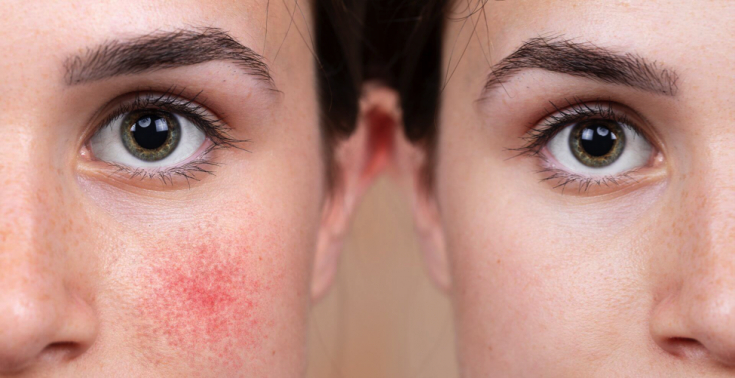The problem of correction and prevention of scars of various origins has been and will continue to be relevant due to the wide spread of pathology and the complexity of therapy. The same applies to such chronic multifactorial dermatosis as rosacea. Indications for the use of botulinum toxin type A in medicine are growing daily. Therapy of pathological scars and symptomatic treatment of rosacea with the use of neurotoxin are slowly but surely taking their positions among them, showing good results. Read on estet-portal.com how botulinum therapy can affect formation and clinical picture scars,
- Botulinum toxin as a method of scar prevention and correction
- Symptomatic treatment of rosacea with using botulinum toxin
Botulinum toxin inhibits fibroblast proliferation and therefore collagen production. According to animal studies, under the influence of neurotoxin also decreases the amount of connective tissue growth factor and transforming growth factor-β1.
Follow us on Facebook!
Preparationsbotulinum toxin type A are local muscle relaxants with long-term action, which allows them to be used for pathogenetic prevention of scar formation. The injection of neurotoxin into the subcutaneous muscles leads to prolonged muscle relaxation, due to which the skin will not stretch during mimic movements.
In this case, botulinum therapy excludes excessive tissue stretching, which exacerbates inflammation and stimulates intensive collagen production, even at the stage of scar formation, as an unfavorable risk factor for its development.This method should be used
after excision of an existing scar to improve the cosmetic result.
Read also: Anatomy of botulinum therapy: aesthetic correction of the lower third of the face
The use of botulinum therapy for existinghypertrophic and keloid scars will reduce pain and sensitivity in the scar area, releasing the nerve fibers woven into the scars.
In this case, it is recommended to injectbotulinum toxin directly into the scar tissue. According to some studies, this will also help to change the consistency of hypertrophic scars to a softer one and reduce erythema.
Follow us on Instagram!
In the presence ofhypotrophic and atrophic scars, botulinum toxin is injected into the scar area, which leads to smoothing of the skin surface and reduction of scar visualization due to relaxation of the subcutaneous muscles.
Botulinum toxin reduces inflammation in the scar area and improves wound healing by inhibiting the release ofpro-inflammatory neurotransmitters such as substance P and calcitonin gene-related peptide, which will eventually lead to a less pronounced scar.
According to clinical studieson the basis of the Mayo Clinic (USA), the introduction of neurotoxin into the area of the forming scar on the face leads to the subsequent formation of normotrophic scar.
Symptomatic treatment of rosacea with botulinum toxinAnalyzing the data of the conducted studies, it becomes clear that botulinum toxin injections can
positively influence the course of rosacea. The mechanism is not 100% understood, but the good results can be explained by the wide interaction of the structures of the skin and the nervous system:
The neurotoxin blocks the release of the neurotransmitter acetylcholine in the peripheral autonomic nerve fibers of the vasodilator system of the skin, thereby preventing vasodilation, reducing hyperemia.As already known,
Botulinum toxin type A inhibits the release of neuropeptides such as substance P and calcitonin gene-related peptide. Substance P is involved in the release of inflammatory mediators and activation of pain receptors, increases the permeability of the vascular wall.

Calcitonin gene-related peptide is released from trigeminal ganglion neurons, resulting in
release of inflammatory mediators and dilation of cranial vessels.
Read also: Modern aspects of diagnosis and treatment of rosacea
Influencing all these factors can lead toreduction of local inflammation and skin flushing in rosacea, while relieving pain.
Research on the effect of botulinum toxin on the course of rosacea and the condition of pathological skin scars is ongoing, but already at this stage it can be understood that the use of neurotoxin safely and effectively reduces local inflammation and hyperemia of the skin,influencing neurotransmitters.
Read also: Algorithm for rehabilitation of patients after rosacea treatment
Due toprolonged muscle relaxation effect and reduction of skin tension in the area of damage, botulinum toxin contributes to the formation of a normotrophic scar, improvement of the clinical picture of already existing hypertrophic and atrophic scars, and reduction of pain in the presence of keloids.
More interesting stuff on our YouTube channel:







Add a comment